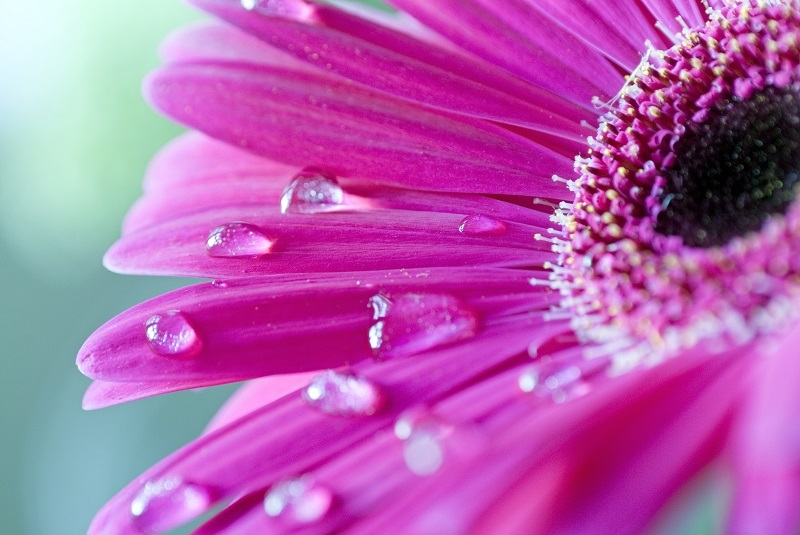Unlocking the Secrets to Vibrant Hydrangeas
Posted on 13/08/2025
Unlocking the Secrets to Vibrant Hydrangeas
Hydrangeas are renowned for their breathtaking blooms and elegant presence in gardens throughout the world. But achieving those luscious, vibrant hydrangea flowers is both an art and a science. Whether you are a seasoned gardener or a budding enthusiast, this comprehensive guide will explore the essential tips, techniques, and secrets to ensure your hydrangea shrubs burst with color and vitality year after year.
Understanding Hydrangeas: A Glance Into Their World
Before unlocking the full potential of hydrangeas, it's essential to understand their unique characteristics and varieties. There are several popular types of hydrangeas, each with its own specific requirements and traits. Knowing your plant is the first step toward cultivating vibrant hydrangea blooms.
Popular Hydrangea Types
- Hydrangea macrophylla (Bigleaf or Mophead): Known for large, ball-shaped clusters and the ability to change flower color based on soil pH.
- Hydrangea paniculata (Panicle): Features cone-shaped blooms that often turn pink as they age.
- Hydrangea quercifolia (Oakleaf): Recognized by their oak-shaped leaves and white to pink blooms.
- Hydrangea arborescens (Smooth Hydrangea): Produces classic white, round flowers, including the famous 'Annabelle'.

The Essentials of Vibrant Hydrangea Care
Unlocking the vibrancy of your hydrangeas requires a careful balance of planting, feeding, watering, and pruning. Let's explore each aspect in detail to ensure your hydrangea garden reaches its full, blooming potential.
Site Selection: Choosing the Right Spot
- Light Requirements: Hydrangeas thrive in locations with morning sun and afternoon shade. Too much sun can scorch the leaves and impede flower development, while too much shade can reduce blooming.
- Soil Conditions: The best hydrangea blooms occur in rich, well-draining soil. Incorporate organic matter, such as compost, to boost soil nutrition and structure.
Proper Planting Techniques
- Dig Wide, Not Deep: Dig a hole twice the width of the root ball but no deeper than its height. This allows roots to spread comfortably.
- Water Well: After planting, thoroughly soak the soil to settle roots and eliminate air pockets.
Understanding Hydrangea Watering Needs
- Consistency is Key: Hydrangeas need even moisture, especially during hot summer spells. Roots mustn't dry out completely, or your blooms will wilt and fade.
- Mulch Matters: A 2-3 inch layer of organic mulch helps retain soil moisture, regulate temperature, and suppress weeds.
Fertilizing for Vibrant Hydrangea Blossoms
Feeding hydrangeas appropriately boosts their overall health and encourages robust, colorful blooms.
- Balanced Fertilizer: Use a slow-release, balanced fertilizer in early spring. Excess nitrogen promotes leaf growth at the expense of flowers, so select a formula with lower nitrogen content.
- pH Adjustment: For Bigleaf Hydrangeas, soil pH can dramatically influence flower color--the secret to unlocking blue or pink blossoms!
To achieve deep blue hydrangeas, maintain a soil pH of 5.2-5.5 by adding aluminum sulfate. For rich pink hydrangeas, raise the pH above 6.0 with garden lime. Test your soil and amend accordingly for the most vibrant hydrangea flowers.
Pruning for Performance
- Timing Matters: Know your hydrangea type! Bigleaf and Oakleaf hydrangeas flower on old wood; prune immediately after blooming. Panicle and Smooth hydrangeas flower on new wood and can be cut back in late winter or early spring.
- Remove Deadwood: Always snip away dead or weak stems to encourage air circulation and healthy, vivid hydrangea flowers.
The Hidden Secrets Behind Hydrangea Color
Hydrangeas are famous for their astonishing range of color, from crisp whites and pale creams to fiery pinks, mauves, and electric blues. But what exactly causes these shifts? The magic lies in the soil's chemistry--and your ability to master it!
The Role of Soil pH
- Acidic Soil (pH below 6): Enables the plant to absorb aluminum, resulting in blue hydrangea blooms.
- Alkaline Soil (pH above 7): Blocks aluminum uptake, leading to pink or even red hydrangeas.
*White hydrangeas typically remain white regardless of soil pH, though subtle shifts may occur in some varieties.*
Tips for Changing Hydrangea Colors
- For Blue Hydrangeas: Add aluminum sulfate or elemental sulfur to lower pH in the early spring; water well after application.
- For Pink Hydrangeas: Apply garden lime to raise the pH. Always check your soil pH first to avoid excess amendments.
- Maintain Level: Monitor soil annually to sustain your desired color and maximize vibrant hydrangea petals.
Maximizing Blooms: Advanced Hydrangea Tips
Once you've mastered the basics, it's time to delve into the finer secrets for producing the biggest, brightest hydrangea blossoms.
Seasonal Maintenance Checklist
- Spring: Prune, fertilize, and mulch for a strong start to the season.
- Summer: Water deeply and watch for fungal diseases; deadhead spent blooms to encourage new flowers.
- Autumn: Stop feeding and gradually reduce watering to allow plants to harden off before winter.
- Winter: Protect roots with an additional mulch layer; avoid pruning to keep flower buds safe.
Key Hydrangea Problems and How to Solve Them
- Wilting Leaves: Often a sign of insufficient water, root rot, or disease. Focus on consistent watering and improve drainage.
- No Flowers: Usually due to incorrect pruning or winter bud damage. Prune at the proper time and consider winter protection in cold climates.
- Leaf Spots and Mildew: Combat with good air circulation, selective pruning, and organic fungicides if necessary.
Hydrangea Propagation Secrets
Unlock even more beauty in your garden (and share the joy with friends!) by propagating hydrangeas.
- Softwood Cuttings: Take a 4-6 inch cutting in late spring or early summer, remove lower leaves, dip in rooting hormone, and plant in a damp potting mix. Cover with a plastic bag to retain humidity.
- Layering: Bend a low-growing hydrangea branch to the ground, wound the bark, and cover with soil. Roots should develop in a few months.
Designing Gardens for Striking Hydrangea Displays
Cultivating vibrant hydrangeas is only half the fun--designing the perfect garden showcase takes your landscape to the next level!
Strategic Location
- Border Backdrops: Hydrangeas make fantastic background plants in mixed borders, especially behind perennials such as hostas and ferns.
- Accent Specimens: Use bold hydrangea varieties like 'Limelight' or 'Endless Summer' as focal points in the landscape.
Companion Planting
- Pair with: Ferns, boxwood, astilbe, and shade-tolerant bulbs, which all highlight the bold forms and hues of hydrangeas.
- Avoid competing roots: Don't plant too close to trees or aggressive ground covers.
Container Gardening With Hydrangeas
If you don't have room in the ground, hydrangeas thrive in large containers with proper drainage, regular watering, and an annual top-up of fresh soil and fertilizer.
Unlocking Hydrangea Myths and Folklore
Did you know hydrangeas have a lengthy cultural history and symbolic meaning?
- Hydrangeas symbolize grace, abundance, and gratitude in many cultures.
- In Japan, hydrangeas are associated with heartfelt emotion and apologies.
- According to folklore, blue hydrangeas bring peace and serenity, while pink ones evoke romance.

Frequently Asked Questions (FAQ) About Vibrant Hydrangeas
-
How can I make my hydrangea flowers more vibrant?
Proper watering, adequate sunlight, regular mulching, and fertilizing with the right nutrients are essential. Adjust soil pH for the desired flower color. -
How often should I fertilize my hydrangeas?
Feed in early spring and, if desired, again in mid-summer with a balanced slow-release fertilizer. -
Why are my hydrangea blooms turning brown?
Likely due to extreme heat, lack of water, or sunburn. Provide afternoon shade and maintain consistent moisture for the most vibrant petals. -
Can I change my hydrangea flowers from pink to blue?
Yes! Lower your soil's pH with aluminum sulfate. Be patient; color shifts may take a growing season to fully develop.
Conclusion: Your Garden's Hydrangea Oasis
Unlocking the secrets to vibrant hydrangeas is both an exciting journey and a rewarding destination. From choosing the right location and soil to adjusting pH, strategic pruning, and attentive seasonal care, every detail contributes to the dazzling display these beloved shrubs are famous for.
With the right care and a dash of experimentation, your hydrangeas will flourish into a colorful highlight of your garden, bursting with life, beauty, and years of spectacular blooms.
Start your journey today by tending to the basics--light, soil, water, and food. Then, experiment with the advanced tips provided to transform your yard into a hydrangea paradise!
Happy gardening and may your hydrangeas always shine with vibrant color!
```Latest Posts
Maximizing Poinsettia Longevity
Unlocking the Secrets to Vibrant Hydrangeas
Peony Flowers' Symbolic Significance and the Meaning of Their Colors
Unlock the beauty and meanings of birth month flowers
The Love Language of Red Roses in Valentine's Day Celebrations






